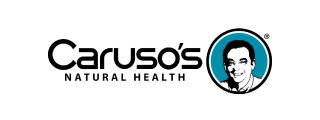
- Health advice
- May 18, 2018
Not many women in their late 40’s to early 50’s are lucky enough to escape hot flushes and night sweats associated with menopause. Menopausal symptoms and their severity, can vary greatly between women, and can last anywhere from a few months to ten years or more. Specific herbs and the mineral magnesium can help to provide day and night relief for hot flushes and night sweats.
Hot flushes and night sweats
Hot flushes and night sweats typically herald the early signs of hormonal changes for women. The frequency and severity of hot flushes and night sweats can vary on a day to day basis; they can come and go, leaving you feeling hot and sweaty, drenched in perspiration or feeling uncomfortably hot and red faced with intense heat affecting your face and body. Hot flushes can leave you feeling stressed and irritated, while night sweats interrupt the quality of your sleep. Stress and alcohol can aggravate hot flushes and night sweats, whereas physical exercise can help to reduce their severity and frequency.Declining oestrogen levels
There is a significant relationship between declining oestrogen levels and hot flushes and night sweats. Decreasing oestrogen production by the ovaries triggers the hypothalamus and pituitary gland in the brain to raise follicle stimulating hormone (FSH) levels to ‘jump-start’ the ovaries back into producing appropriate levels of oestrogen. This shift also influences the release of luteinising hormone (LH), with a surge in LH implicated in the initiation of hot flushes and night sweats. Your body’s natural thermostat lies in the hypothalamus, and when these unpredictable hormone fluctuations occur, it leads to changes in your normal body temperature, where your blood vessels suddenly dilate, creating sudden heat and perspiration.Night and day support for hot flushes and night sweats
There are a few specific herbs that can help to reduce the frequency and severity of hot flushes and night sweats, and in conjunction with magnesium, can help to relieve menopausal symptoms related to stress, insomnia and low libido.- Sage is traditionally used to relieve excessive sweating so helps to moderate the symptoms of declining oestrogen levels by reducing hot flushes, night sweats and profuse sweating associated with menopause. Sage also helps to improve mood and mental clarity.
- Zizyphus is used in Traditional Chinese Medicine (TCM) to relieve night sweats, abnormal sweating, mild anxiety, irritability and insomnia.
- Shatavari is traditionally used in Ayurvedic medicine as a female rejuvenating herb with adaptogenic activity to help relieve menopausal symptoms such as hot flushes and associated stress. Shatavari means ‘she who possesses a hundred husbands’, indicating its use for helping to improve libido.
- Chaste tree, also known as Vitex, alters FSH and LH production, helping to relieve hot flushes and night sweats. Chaste tree maintains dopamine activity, a neurotransmitter involved in maintaining normal body temperature and healthy mood.
- Rehmannia is associated with conditions of ‘internal heat’, including night sweats, and supports the adrenal glands, helping you to ‘adapt and cope’ to stress. Stress places an additional load on your adrenal glands, which are responsible for producing small amounts of oestrogen once ovarian levels decrease.
- Magnesium levels tend to decrease during menopause due to lowered levels of estrogen. Magnesium is often called the ‘relaxation’ mineral due to its nurturing and calming effect on the nervous system, so helps to reduce hot flushes and night sweats, mild anxiety, mood disturbances and insomnia.
References
- Bone K, 2003, A Clinical Guide to Blending Liquid Herbs: Herbal Formulations for the Individual Patient, Missouri, Churchill Livingstone.
- Braun L & Cohen M (2010), Herbs & Natural Supplements: An evidence-based guide, 3rd Edition, Sydney, Elsevier.
- Deecher DC & Dorries K, 2007, Understanding the pathophysiology of vasomotor symptoms (hot flushes and night sweats) that occur in perimenopause, menopause, and postmenopause life stages, Arch Women’s Ment Health, 10:247-257.
- Hechtman L (2011), Clinical Naturopathic Medicine, Australia, Elsevier.
- Pizzorno JE, Murray MT & Joiner-Bey H, 2002, The Clinician’s Handbook of Natural Medicine, Edinburgh, Churchill Livingstone.
- Sarris J & Wardle J, (2010), Clinical Naturopathy; An evidence-based guide to practice, Sydney, Churchill Livingstone.
- Trickey R, 2011, Women, Hormones & the Menstrual Cycle, Melbourne, Trickey Enterprises Pty., Ltd.
Related Articles
Recently Viewed
- ${ variant.price | currencyFromCents } | ${ variant.title } ${ variant.price | currency } | ${ variant.title }
Sale



















